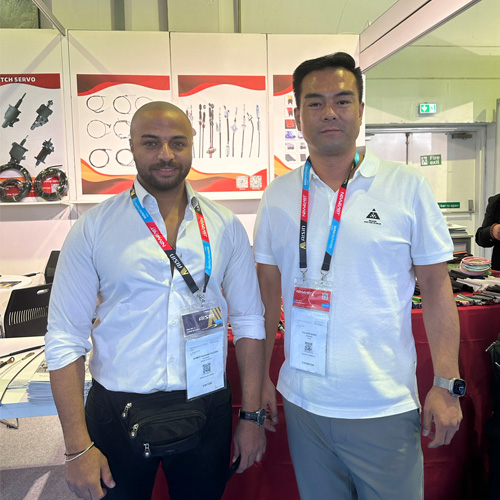line shaft clutch
Understanding Line Shaft Clutches Their Importance in Mechanical Systems
In the realm of mechanical engineering and manufacturing, efficiency and control are paramount. One of the critical components that ensure the seamless operation of complex machinery is the line shaft clutch. This article delves into the concept of line shaft clutches, their functions, types, applications, and the advantages they bring to industrial systems.
What is a Line Shaft Clutch?
A line shaft clutch is a device that links a power source, such as a motor, to a driven machine or component through a common shaft. In essence, it allows the operator to engage or disengage machinery while the power is still supplied, which is particularly useful in systems where multiple machines are driven off a single power source. The line shaft itself is a rotating shaft that transmits power from one location to another, and the clutch acts as the intermediary that controls the flow of power.
Functionality of Line Shaft Clutches
The primary function of a line shaft clutch is to control the connection between the motor and the machinery. Here are some key functionalities
1. Engagement and Disengagement The clutch allows for the machines to be engaged or disengaged without shutting down the power supply. This is crucial in operations where continuous running of machinery is not feasible or required.
2. Overload Protection Many line shaft clutches are designed to slip in the event of an overload, thereby protecting both the motor and the driven components from damage.
3. Regular Operation In production environments, line shaft clutches enable smooth transitions between different phases of operation. For example, they can be employed to synchronize operations in assembly lines, where the machinery demands precise timing.
Types of Line Shaft Clutches
Line shaft clutches come in various designs, each suitable for different applications
1. Mechanical Clutches These use physical components like levers and springs to engage and disengage. They are reliable for consistent applications.
2. Pneumatic Clutches They use compressed air to engage the clutch, allowing for quick and remote operation. These are often used in systems where precise timing is crucial.
3. Hydraulic Clutches Similar to pneumatic clutches but utilizing hydraulic fluid for engagement. They excel in environments needing high power transmission without mechanical contact.
4. Electromagnetic Clutches These clutches rely on electromagnetic forces to engage and disengage. They are typically used in situations where speed and rapid engagement are essential.
line shaft clutch

Applications of Line Shaft Clutches
Line shaft clutches find application across the manufacturing and industrial landscape. Common uses include
1. Textile Manufacturing In textile mills, line shaft clutches facilitate the operation of looms and other machinery from a central drive source while enabling flexible control.
2. Printing Presses These clutches allow for quick starts and stops in printing processes, providing a more efficient workflow.
3. Packaging Machinery In packaging lines, line shaft clutches ensure that machines operate in harmony, adapting to different product sizes and types without extensive reconfiguration.
4. Food Processing Clutches are employed in food production lines, permitting the modular operation of machines that carry out various tasks such as slicing, packaging, and sealing.
Advantages of Using Line Shaft Clutches
The integration of line shaft clutches into mechanical systems offers numerous advantages
1. Improved Efficiency They allow for optimal use of energy by enabling machines to operate only when required.
2. Flexibility Operators can easily switch between machines, enhancing the versatility of manufacturing lines.
3. Reduced Wear and Tear By preventing complete mechanical engagement or disengagement during operation, the life of machinery components can be extended.
4. Safety Line shaft clutches contribute to operational safety by reducing the risk of damage to equipment during unexpected load situations.
Conclusion
Line shaft clutches serve as a vital component in modern mechanical systems, revolutionizing the way industries operate. Their ability to manage power transmission effectively facilitates a smoother workflow, promotes efficiency, and ensures longevity in machinery. As technology continues to evolve, the development of more sophisticated clutches will further enhance industrial operations, paving the way for an even more efficient manufacturing ecosystem.
-
Upgrade Your Vehicle with High-Quality Handbrake CablesNewsNov.01,2024
-
Optimize Your Bike's Performance with Quality CablesNewsNov.01,2024
-
Enhance Your Vehicle's Performance with Quality Clutch ComponentsNewsNov.01,2024
-
Elevate Your Vehicle's Performance with Quality Throttle CablesNewsNov.01,2024
-
Elevate Your Vehicle's Performance with Quality CablesNewsNov.01,2024
-
Affordable Solutions for Your Cable NeedsNewsNov.01,2024
